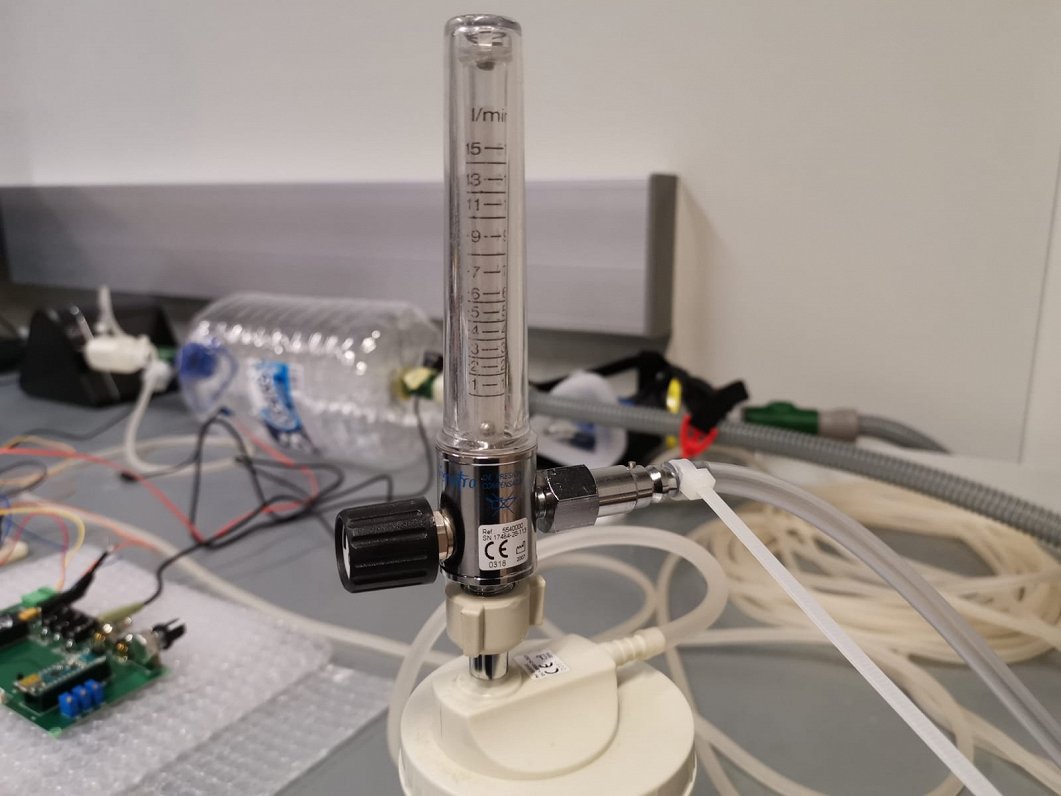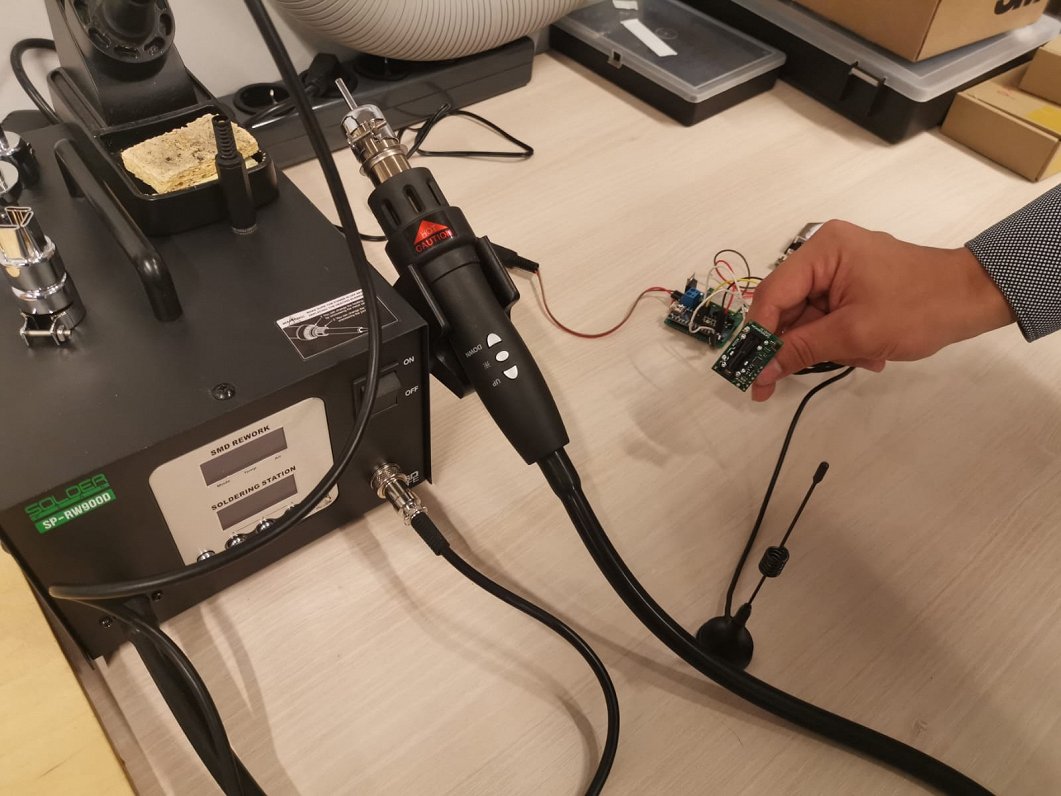
[ad_1]
University of Latvia spoke to Latvian Radio October 6 showcasing their research projects and inventions within COVID-19 limitation program.
Latvian universities and scientific institutes are actively involved in the new state research program for the mitigation of the effects of COVID-19. See LSM’s other story about the projects at Rīga Technical University. University of Latvia (LU) are currently working on a secure room system and equipment to facilitate patient breathing.
A device that supplements existing medical equipment to facilitate breathing in patients who need support but do not yet need complete artificial ventilation is one of the projects in progress.

“There is a certain amount of overpressure being applied to the person, so that it is easier for the lungs to spread and absorb air and thus oxygen. This air the patient receives will be enriched with oxygen. The patient will receive the amount needed to normalize the breathing process.
On the basis of an existing sleep apnea device, this tool is designed to provide an additional function at low cost. In a critical case, it can be used in many patients,” said Andris Jakovičs, lead researcher at the Institute for Numeric Modeling.
Another project develops the concept of an epidemiologically safe space. Smart spaces equipped with multiple sensors, microphones and cameras will measure different risk factors. For example, the number of people in the room following fluctuations in humidity and CO2 levels.
“This small box is a minicomputer with a built-in graphical map that handles information from our sensors. Here’s a program that can count objects with the camera,” researcher Jevgēnijs Teličko explained.

Similarly, a room noise analysis can indicate risks, added Andris Jakovičs:
“Coughing and sneezing. That means there’s something already there, an infection of the upper respiratory system. We don’t record the sound of people speaking, but with artificial intelligence software we can catch the significant noises and their level in the room.”
Given that the risks of infection are higher in indoor areas: offices, large businesses, nursing homes, schools, universities and other places where large numbers of people gather, the safe-room system would alert people to the risks of increasing the probability of disease in a given room.
“Given the studied correlations about the peculiarities of the virus, we can generate a risk function,” Jakovičs said.
“It doesn’t break the existing system, but complement it with new measurements. The aim is not to create something new and expensive, well, like a thermocamera at the door which costs thousands, but to build a microsensory-based system that will cost €50 for one safe room,” said Jakovics.
The researchers have created the first set to be tested in university classrooms in the near future.
Select text and press Ctrl+Enter to send a suggested correction to the editor
Select text and press Report a mistake to send a suggested correction to the editor
[ad_2]
Source link